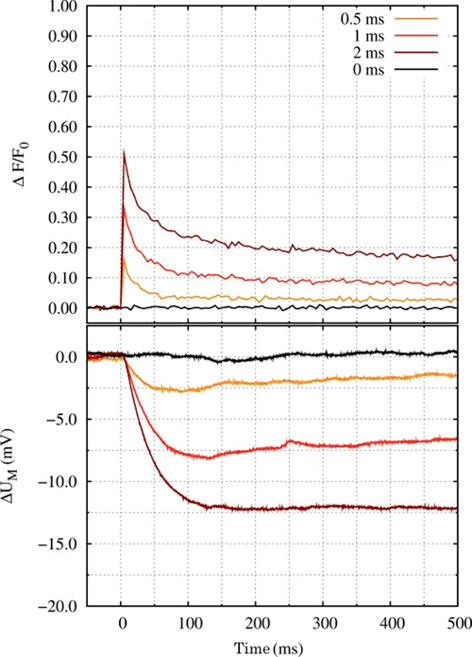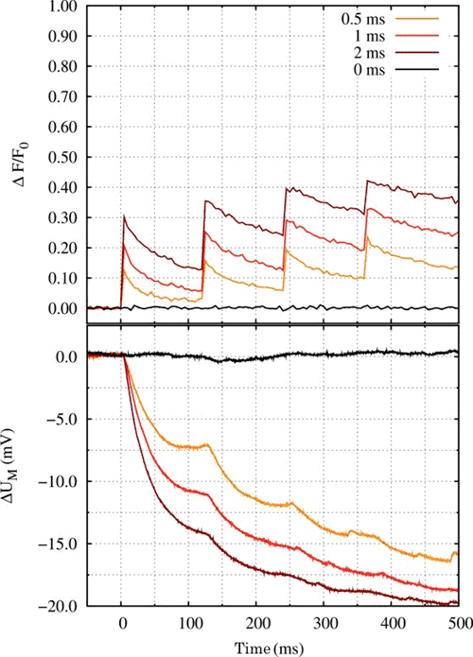Analyzing Calcium Responses in Acute Brain Slices Induced by UV-Uncaging
As a proof of concept, experiments in acute brain slices were performed to characterize the uncaging efficiency of caged calcium in response to localized UV irradiation. By using Fluo4 as an indicator for intracellular calcium levels as well as patch clamp recordings, a rapid calcium response could be observed, indicating an uncaging dynamics within physiological ranges. Furthermore it could be shown, that the intracellular calcium levels triggered by UV-uncaging could be modulated by either increasing the laser pulse-duration (fig.1) or by integrating calcium responses over several pulses of UV laser light (fig.2).

Figure 1: Single, light induced stimulation of a neuron. Above the relative change in the fluorescence of a calcium dye (fluo4-FF, Invitrogen) visualizes the uncaging of Ca2+ ions at time point 0; below the corresponding change of the membrane potential is shown. Caged Calcium was brought into the soma of a hippocampal neuron via a patch pipette and was photolysed via a UV flash. The energy delivered to the tissue was modified by the duration of the light flash; it is given in the legend (0.5 ms, 1 ms, 2 ms, 0 ms corresponds to the control measurement).

Figure 2: Successive, light induced stimulation of a neuron. Above the relative change in the fluorescence of a calcium dye (fluo4-FF, Invitrogen) visualizes the uncaging of Ca2+ ions at time point 0; below the corresponding change of the membrane potential is shown. Caged Calcium was brought into the soma of a hippocampal neuron via a patch pipette and was photolysed via a train of four UV flashes (inter-flash interval: 125 ms). The energy delivered to the tissue was modified by the duration of a light flash; it is given in the legend (0.5 ms, 1 ms, 2 ms, 0 ms corresponds to the control measurement).
Setup:
- Microscope: Olympus BX51W – Widefield system
- Objective: LUMPLFLN 40x NA 0.8 W
Rapp OptoElectronic Components:
- Photomanipulation: UGA scanner device equipped with DPSL355/30 pulsed UV laser
Data from:
M.T. Knopp(1), T. Bonhoeffer(1) & U.V. Nägerl(2)
1: Department of Cellular and Systems Neurobiology at Max Planck Institute of Neurobiology (Martinsried, Germany)
2: Inserm U862 at Universié Victor Segalen (Bordeaux, France)
